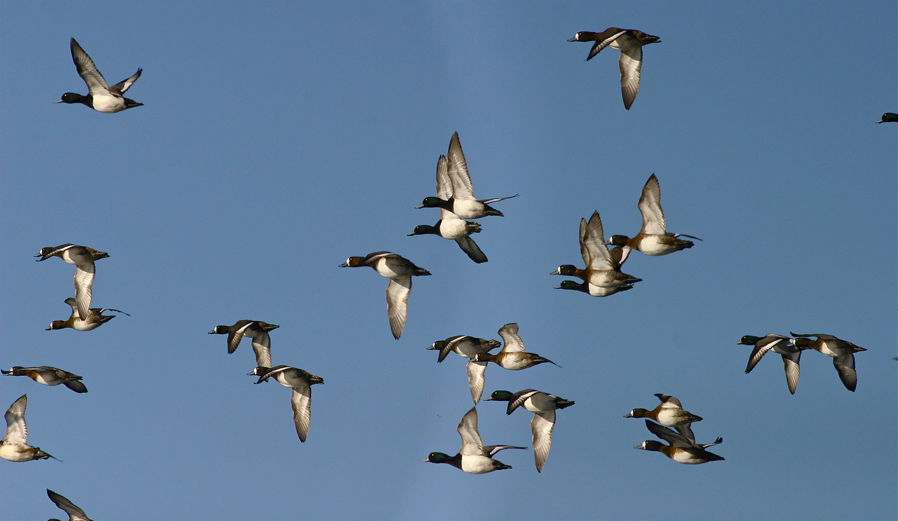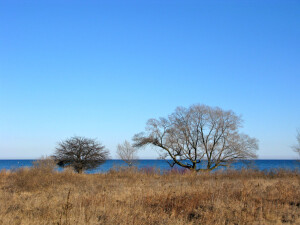

Something alerted the ducks as I was watching them on an inner pond at the Spit, and they all took off at once. © BCP 2010
I couldn’t let my wonderful visit to the Leslie Street Spit last weekend go by without including a photo or two of the ducks there. Anyone who has ever ventured past the gates into Tommy Thompson Park (don’t get caught on the wrong side of the gate at closing time, like I did…) knows that one of its singular attractions is the huge variety of waterfowl that either reside in the park and or pass through it during their migrations.
I spent a long time watching a raft of ducks near the metal bridge about the half-way point of the main road. Even with good binoculars, it was hard to be entirely sure what birds I was seeing, as they were quite far out. But I was able to identify scaups, mergansers, long-tails, mallards and possibly some red-heads.
I’m thinking that the ducks in the above photo are scaups, but whether they are greater (Aythaya marila) or lesser (Aythaya affinis) I cannot say.
According to my wonderful handbook, Waterfowl of Eastern North America: “The greater and lesser scaup offer the biggest challenge in identification of any of the duck species, and both the males and the females are difficult to tell apart.” The manual goes on to say that head shape is a very important characteristic for distinguishing between the two species, but depending on the duck’s “mood,” even this characteristic can be unreliable. I can assure the reader I was far too far away to be able to ascertain the mood of any duck I saw at the Spit.


On the way home from the duck pond at the Spit. © BCP 2010
But here’s the concluding line regarding identification from the entry on greater scaups in my book: “It is important to note that not all scaup can be identified conclusively. Remember, it is OK to say ‘I don’t know.’ ”
There you have it. I don’t know….But if anyone can help with the identification, I’d love to hear.


Two perfect trees at the Leslie Street Spit. © BCP 2010
My trip back from the duck ponds was a pleasant one. The wind had died down somewhat, and the afternoon sun spread its warmth on my shoulders like a favourite soft sweater. There was hardly a cloud in the sky, and you could feel the energy from the sun warming up the land, encouraging tiny green shoots to break forth from the muddy ground.
My eye was caught by the lovely shapes of two trees along the eastern side of the Spit. Don’t know from their branch structure what species they are.
But as with the ducks above, we don’t always have to name something lovely in order to appreciate it.
© BCP 2010


1 comment